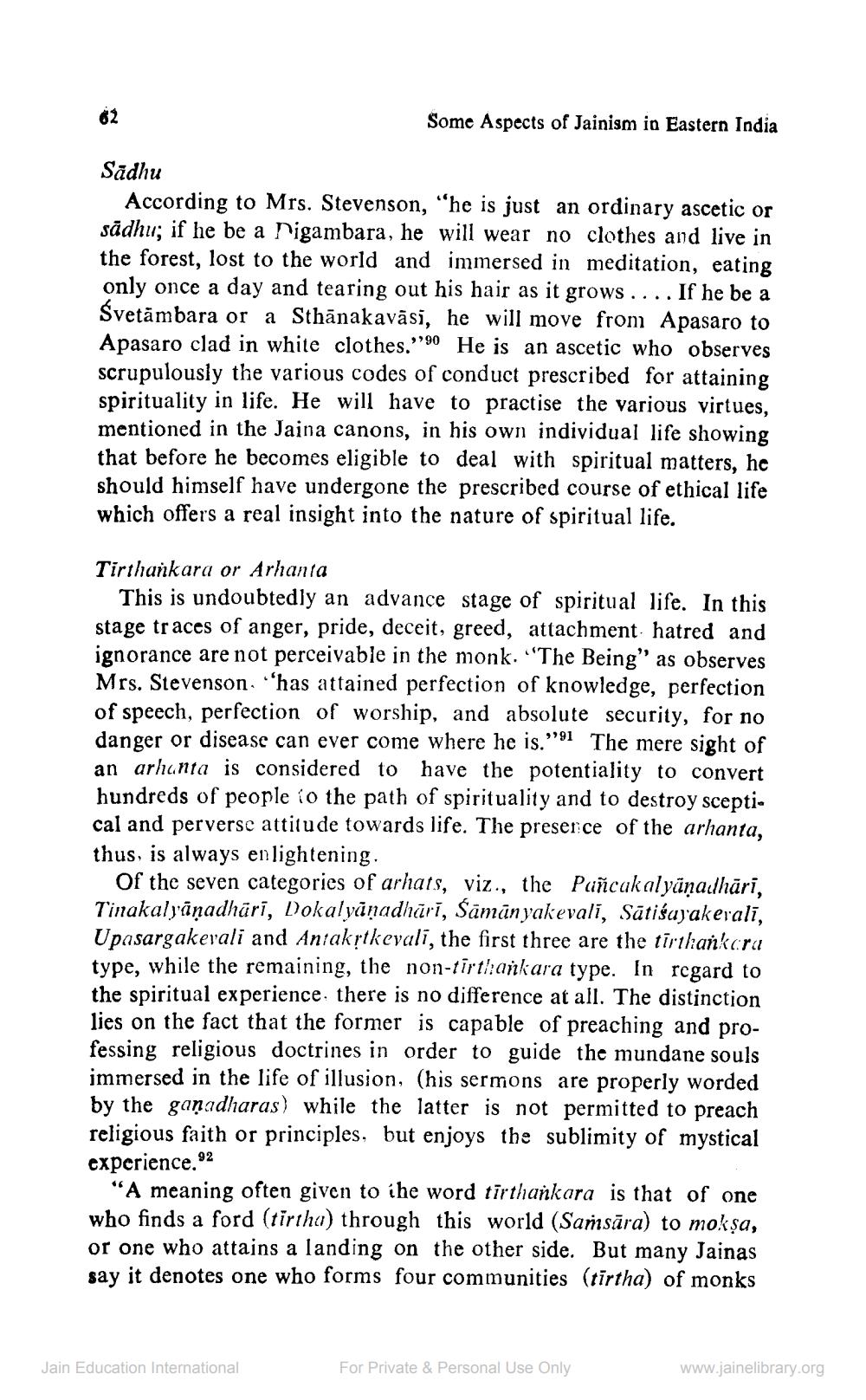________________
62
Some Aspects of Jainism in Eastern India
Sadhu
According to Mrs. Stevenson, "he is just an ordinary ascetic or sadhu; if he be a Digambara, he will wear no clothes and live in the forest, lost to the world and immersed in meditation, eating only once a day and tearing out his hair as it grows. . . . If he be a Śvetämbara or a Sthanakavāsi, he will move from Apasaro to Apasaro clad in white clothes."'90 He is an ascetic who observes scrupulously the various codes of conduct prescribed for attaining spirituality in life. He will have to practise the various virtues, mentioned in the Jaina canons, in his own individual life showing that before he becomes eligible to deal with spiritual matters, he should himself have undergone the prescribed course of ethical life which offers a real insight into the nature of spiritual life.
Tirthankara or Arhanta
This is undoubtedly an advance stage of spiritual life. In this stage traces of anger, pride, deceit, greed, attachment hatred and ignorance are not perceivable in the monk. "The Being" as observes Mrs. Stevenson has attained perfection of knowledge, perfection of speech, perfection of worship, and absolute security, for no danger or disease can ever come where he is." The mere sight of an arhanta is considered to have the potentiality to convert hundreds of people to the path of spirituality and to destroy scepti cal and perverse attitude towards life. The presence of the arhanta, thus, is always enlightening.
Of the seven categories of arhats, viz., the Pañcakalyāṇadhārī, Tinakalyāṇadhārī, Dokalyāṇadhārī, Šāmānyakevalī, Sātiśayakevalī, Upasargakevali and Antakṛtkevali, the first three are the tirthankara type, while the remaining, the non-tirthankara type. In regard to the spiritual experience. there is no difference at all. The distinction lies on the fact that the former is capable of preaching and professing religious doctrines in order to guide the mundane souls immersed in the life of illusion, (his sermons are properly worded by the ganadharas) while the latter is not permitted to preach religious faith or principles, but enjoys the sublimity of mystical experience."
"A meaning often given to the word tirthankara is that of one who finds a ford (tirtha) through this world (Samsara) to mokṣa, or one who attains a landing on the other side. But many Jainas say it denotes one who forms four communities (tīrtha) of monks
Jain Education International
For Private & Personal Use Only
www.jainelibrary.org




